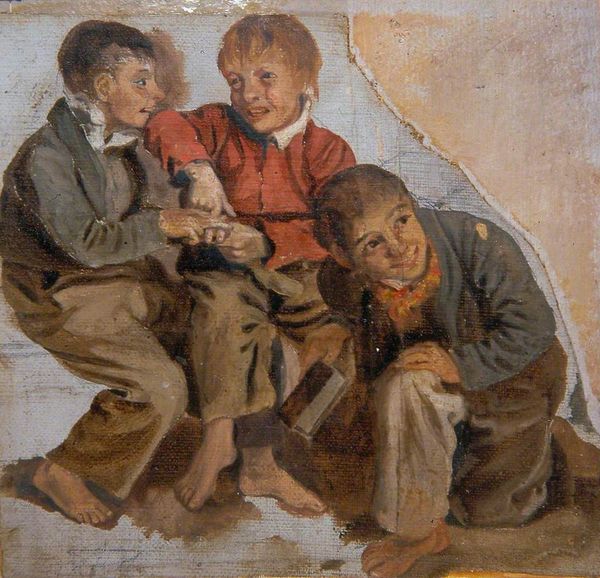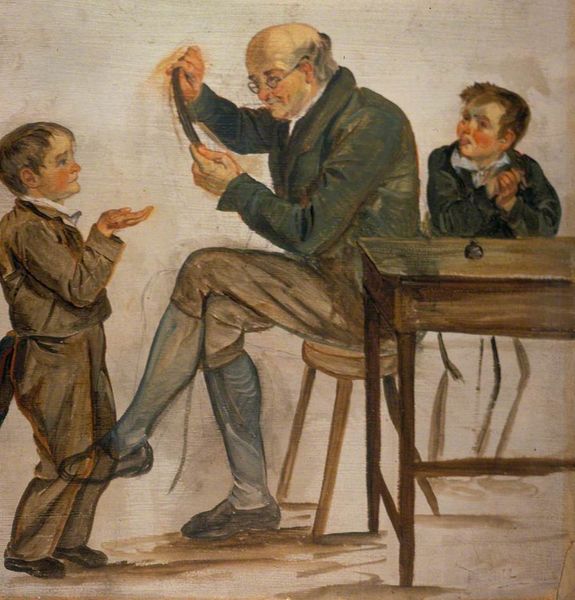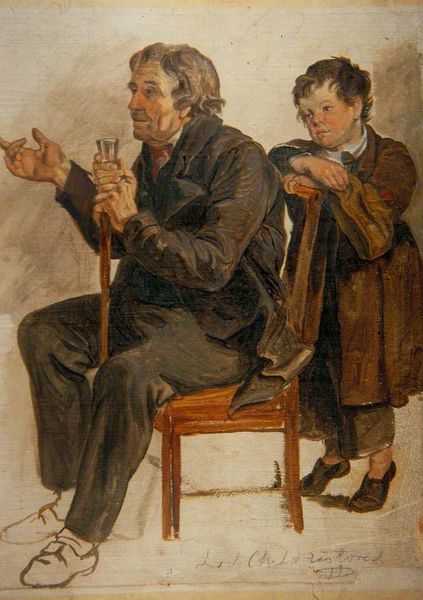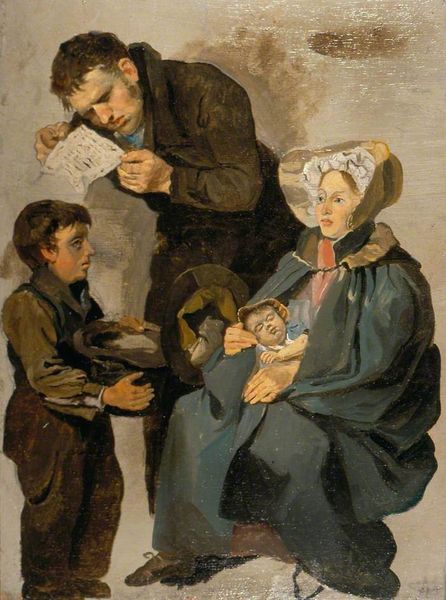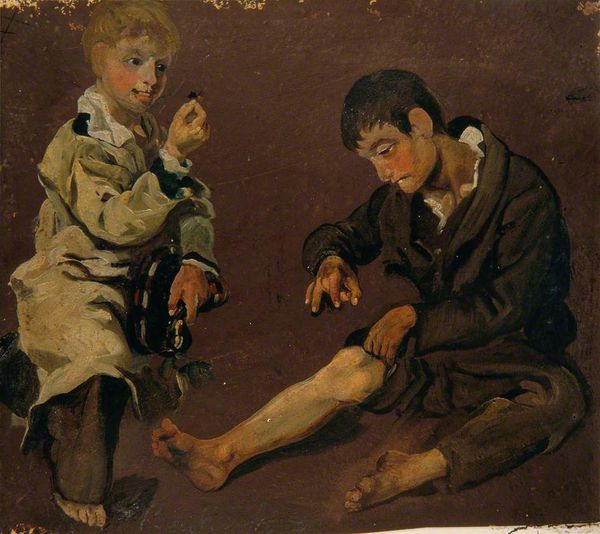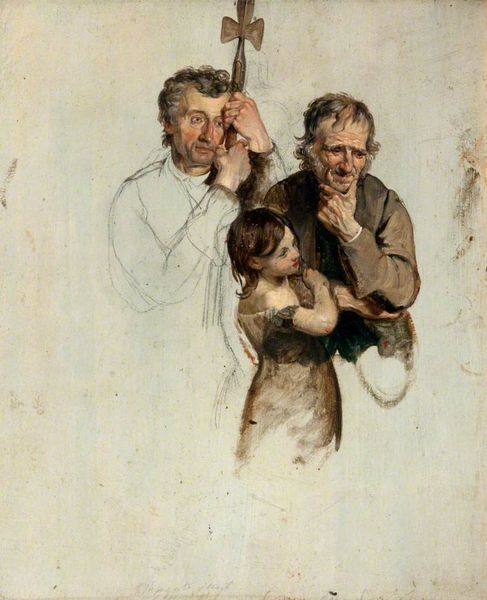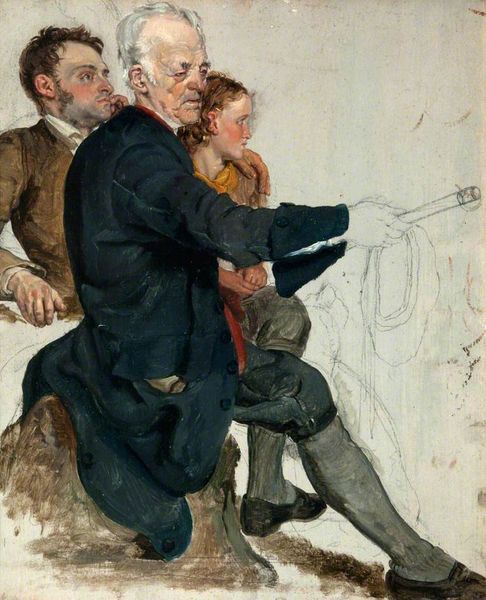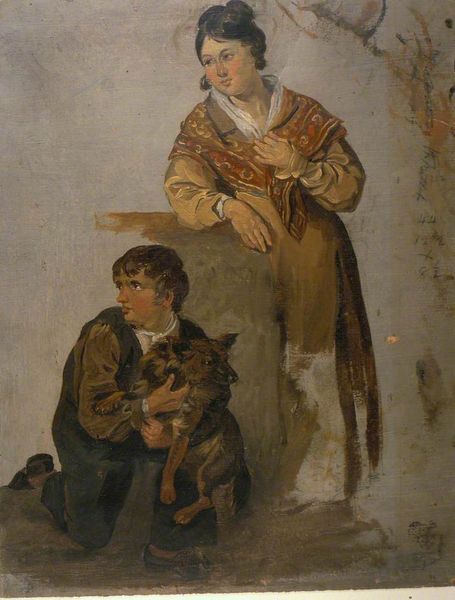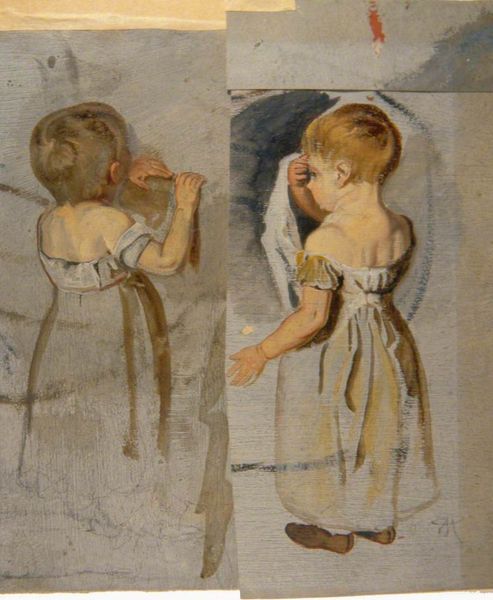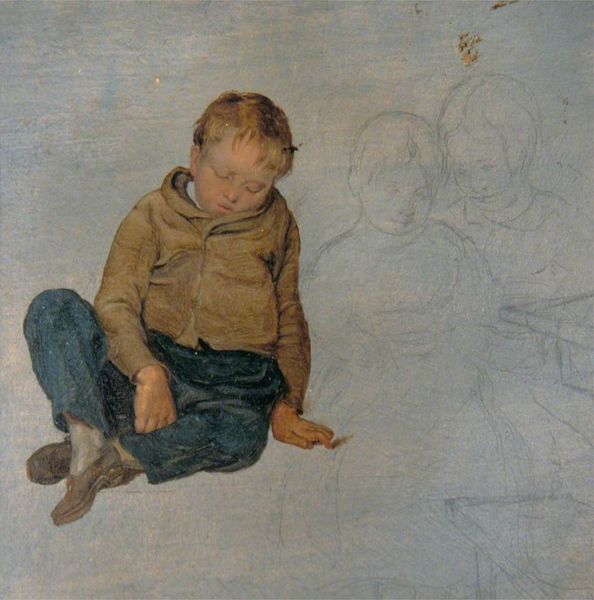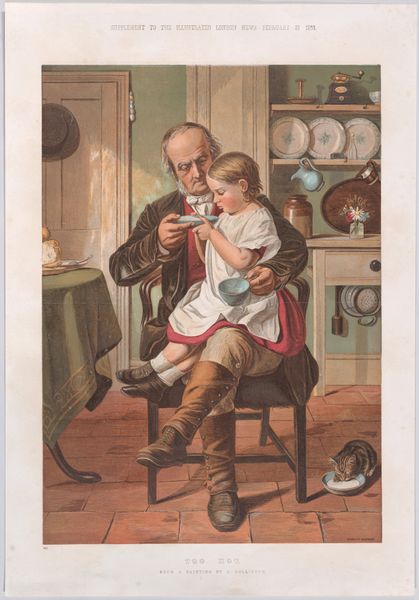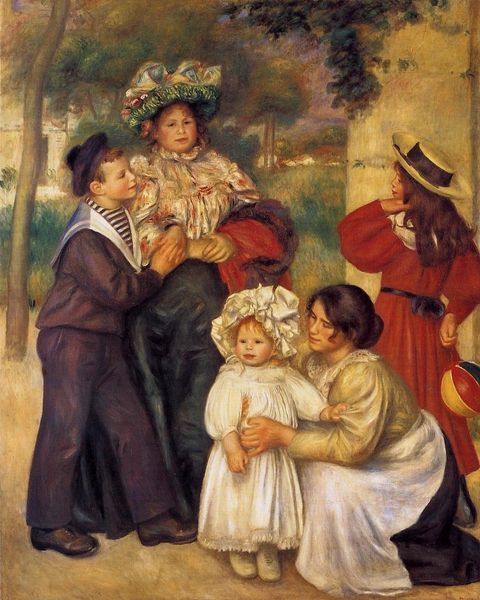
oil-paint
#
portrait
#
narrative-art
#
oil-paint
#
figuration
#
oil painting
#
group-portraits
#
romanticism
#
genre-painting
Copyright: Public domain
Editor: We're looking at "Domestic Pastimes," an oil painting by George Harvey. It presents a scene of apparent tenderness. A father sits with his daughter while another child looks on, holding what appears to be a toy. What can we unpack from this intimate depiction? Curator: I see a seemingly straightforward image, but I wonder about the construction of "domesticity" itself, particularly in the period this piece seems to evoke. Who is afforded these moments of leisure and familial connection? Is it a universal experience or one predicated on certain social and economic privileges? Editor: That's interesting, I hadn't considered that. It seems almost idyllic, but you're right, who is represented, and whose stories are missing? How does the image serve the traditional values, and are there nuances in challenging it? Curator: Exactly! The composition is a factor as well. Where are the women in this “domestic” scene? Does their absence reinforce existing power structures, with the father acting as a temporary, perhaps performative, caregiver? What kind of work, likely unpaid, does their absence imply? How can we use the language of feminist art theory to deconstruct those silent contributions and invisible labor? Editor: It makes you think about the narratives we accept without questioning. And you're highlighting that art reflects societal biases, reinforcing the status quo. It speaks volumes that the focus is on this carefully crafted idea of domestic life, excluding those typically holding this domestic life in place. Curator: Precisely. By exploring the historical context, we can critically engage with how gender, class, and societal expectations play a role in defining art and who it portrays. What assumptions were you making, perhaps subconsciously, before thinking more critically about this? Editor: I just saw the picture. I’ve gained a greater appreciation for interrogating art beyond its surface and how to see its underlying politics. Thank you. Curator: Indeed. Understanding art means questioning power and representation within art, society and even within our own perceptions.
Comments
No comments
Be the first to comment and join the conversation on the ultimate creative platform.
